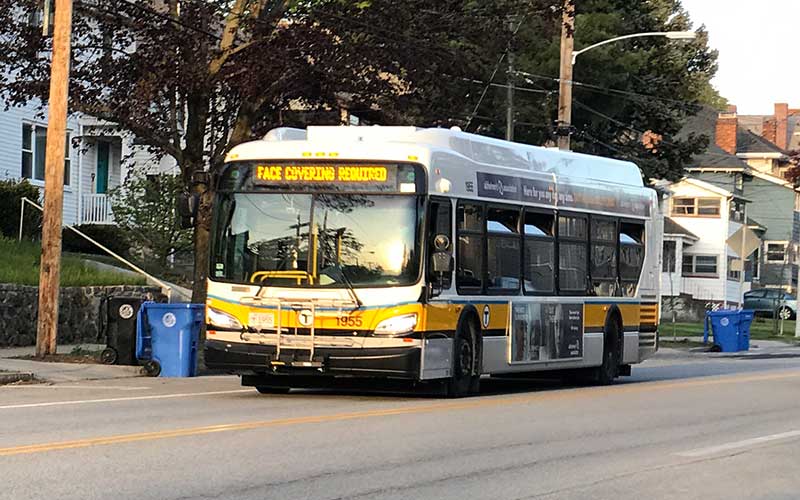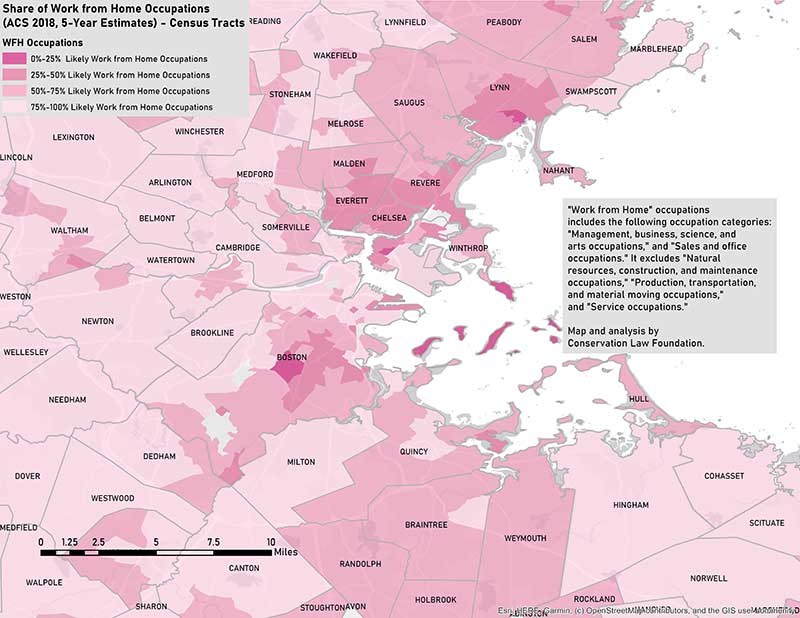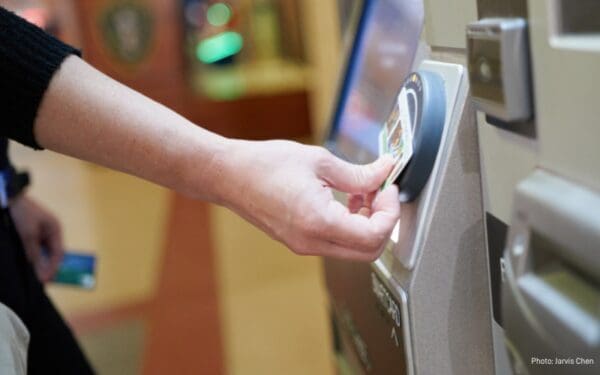
Buses in Boston and other New England cities now require passengers to wear a face mask but more must be done to protect both drivers and passengers.
The COVID-19 crisis is illuminating the importance of our transportation workers and systems. While our New England governors declared emergencies and issued stay-at-home directives, those orders exempted essential workers.
Our bus drivers and train operators, public transit maintenance workers, and cleaning staff make it possible for other essential workers to get to work and for people without cars to get life-sustaining groceries. COVID-19 has suddenly catapulted our transit workers into essential workers putting their lives at risk.
However, authorities are not doing enough to protect these workers or their passengers. Stronger safety measures, including providing personal protective equipment and more frequent service on busy routes, must be implemented immediately – especially with stay-at-home directives beginning to ease.
We Must Protect Transit Workers
With jobs that require them to interact with riders on vehicles and at the farebox, bus drivers and inspectors face a high risk of illness. In recognition of this reality, most public buses throughout Massachusetts and Rhode Island are requiring that riders board at the rear door. The front door is reserved for people with wheelchairs and strollers. The idea is that, by limiting interaction with passengers, there will be less exposure for drivers.
Some transit systems have gone further in their measures to protect drivers. Rhode Island’s transit authority, for example, has limited the number of bus riders to no more than 15. What’s more, passengers there cannot board a bus unless they are wearing a face mask. As of May 6, riders in Massachusetts also must wear a face mask to board buses, trolleys, and trains, but there is still no limit to the number of passengers per vehicle. Also, many public buses have a cone, caution tape, or other physical barriers to maintain distance between the driver and riders.
Current Measures Still Leave Transit Workers Vulnerable
Despite these measures, public transit staff are still getting sick. RIPTA, operating in Providence with more aggressive safety measures, has had 3 of its 666 bus drivers test positive for COVID-19.
The MBTA, operating in Greater Boston with fewer safety measures, has more than 6,000 employees. Of those, 1,835 drive buses and 492 operate the trolleys. The number of bus drivers that have tested positive for COVID-19 is well over 100, and it is growing daily. On a typical day in May, 25 percent of MBTA bus drivers have been unavailable due to COVID-19 leave. One MBTA bus inspector, Andrew Wong, lost his life to COVID-19. That is one too many sacrifices made to help people get to essential places.
Transit authorities should ensure that their workers feel safe and cared for as they provide a life-preserving service. We are calling on them to:
- provide all bus drivers and inspectors with masks and hand sanitizer immediately;
- install a floor-to-ceiling physical barrier near the driver’s seat on buses and trolleys to protect drivers from infection (this will also create more room for passengers to social distance while riding);
- require passengers to wear face masks – and to enforce and monitor this requirement uniformly to prevent unequal enforcement against people of color.
Let’s also remember the cleaning crews, who are the unsung essential workers of the pandemic. Transit authorities are increasing the frequency of cleaning to at least once per day and using anti-viral cleaning agents to maintain the highest levels of sanitation.
These crews must be provided immediately with adequate supplies of personal protective equipment to both prevent them from contracting the coronavirus and keep them safe while exposed to harsh chemicals in the cleaning products.
Riders, too, Need Stronger Protections
The COVID-19 crisis has caused public transit ridership to plummet across the region. Here in Massachusetts, MBTA bus ridership has decreased by 78%, the commuter rail by 93%, and the Green Line, as just one example, by 94%. The RIDE, door-to-door service for people unable to take fixed-route transit, has seen an 82% decrease and is limiting shared trips.
However, the riders who must rely on the system during the pandemic often experience unsafe situations. Boarding at the rear door and keeping away from a driver limits the amount of space that’s left for riders to sit or stand, making it nearly impossible to maintain a safe social distance.
To disperse riders, we are calling for buses and trains to operate more often, especially in transit-dependent neighborhoods, which will limit the number of passengers on each vehicle. It also will ensure that people are not stuck waiting for the next vehicle at crowded bus stops or train stations. Tape must also be installed at bus stops, stations, and on vehicles to help riders maintain a safe social distance.
Dependence on Transit Puts Some Neighborhoods More at Risk than Others
Implementing more robust safety protocols on public transit isn’t just an issue of public health. It’s also an equity and justice issue. Let’s take Massachusetts as an example.
The map at below – based on the most recent American Community Survey census data – shows concentrations of people based on how likely they are to have jobs they can perform remotely. The darker pink areas have comparatively higher numbers of residents who cannot perform their jobs from home (such as maintenance and service work). Many of these jobs also pay low wages, yet are considered essential during the COVID-19 crisis – leaving many residents with no choice but to use public transit to get to work every day.
What’s more, many people of color, low-wage residents, and other low-income families continue to rely on public transit to get to grocery stores, locations with internet access, and other necessary places.
This data can help to direct the MBTA on which neighborhoods in Greater Boston – Dorchester, East Boston, Chelsea, Lynn, Everett, Revere, and Mattapan – need more frequent transit service to allow riders to be six feet apart when on board. The MBTA should implement this increased service now to ensure rider safety.
Transit agencies in other parts of Massachusetts and New England as a whole should perform similar analyses so that those neighborhoods most at risk are prioritized for increased service while the pandemic continues.

Transit Agencies Need to Step Up Protections – Now
The reality is that our transit workers and the passengers that depend on them have already had to work and ride in unsafe conditions for months. It is past time for our transit agencies to take comprehensive actions to ensure our public transit is safe. Agencies across the region need to immediately:
- Increase the frequency of service in neighborhoods dependent on public transportation for basic necessities and where workers are less able to work remotely.
- Provide bus drivers, trolley operators, inspectors, and cleaning crews with masks and sanitizing supplies.
- Construct floor-to-ceiling barriers on buses to protect drivers. Such barriers also will ensure all doors can once again be used for boarding and allow riders to spread out while onboard.
- Allow fare-free boarding on buses and trolleys.
- Enforce a requirement for riders to wear masks at bus stops, stations, and on vehicles and monitor to prevent disproportionate enforcement against people of color.
- Install tape at bus stops, stations, and on vehicles to help riders maintain a safe social distance.
These measures will also provide a head start in ensuring the safety of transit workers and passengers as stay-at-home directives lift fully and more people begin venturing back onto our buses and trains. You can help by contacting your public transit provider to tell leaders what you need to feel safe as a rider.


